- March 28, 2024
Cat Tail Language: Vet-Approved Guide & Signs
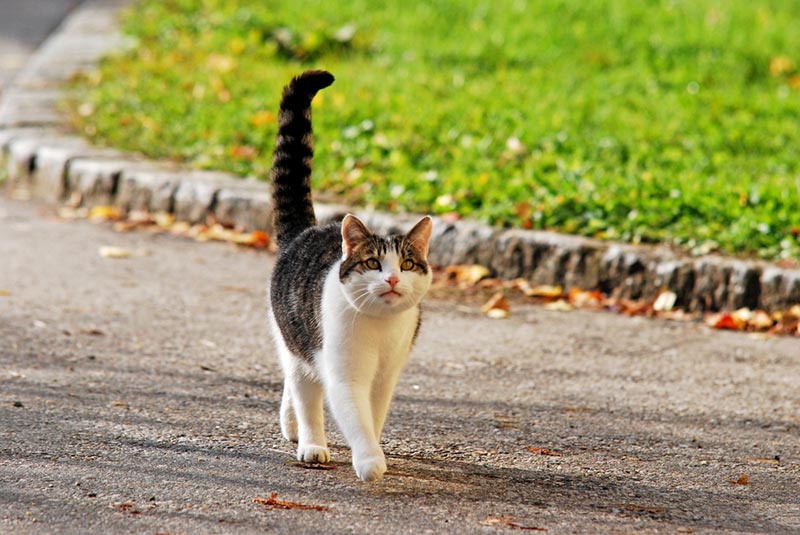
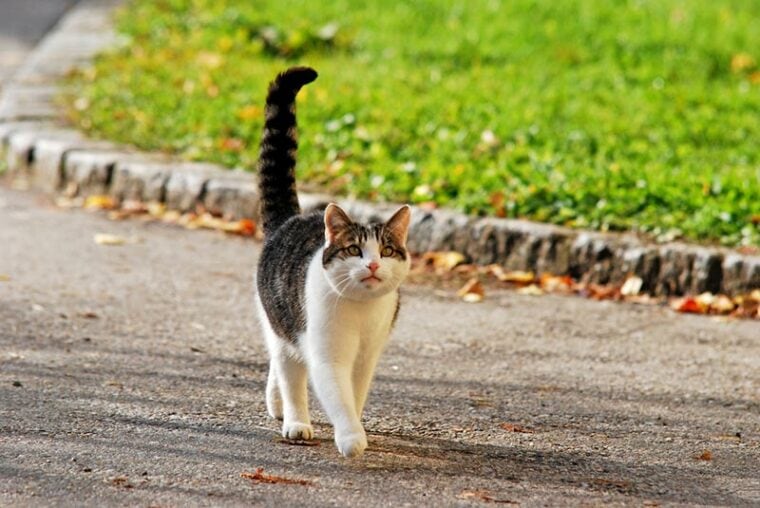

The information is current and up-to-date in accordance with the latest veterinarian research.
Cats are endlessly fascinating, and if you love cats, it’s so much fun to learn about them. They tell us so much about how they are feeling at any particular moment through their body language, and one of the most expressive parts of a cat is their tail.
If you want to learn everything about what your cat’s tail is trying to tell you, we have the details that you’re looking for!

The 9 Cat Tail Language Signs
1. Tail Held High
When a cat walks around with their tail held straight up in the air, they are generally confident and friendly. You should be able to approach this cat and play with and pet them. It’s also a friendly greeting between cats.
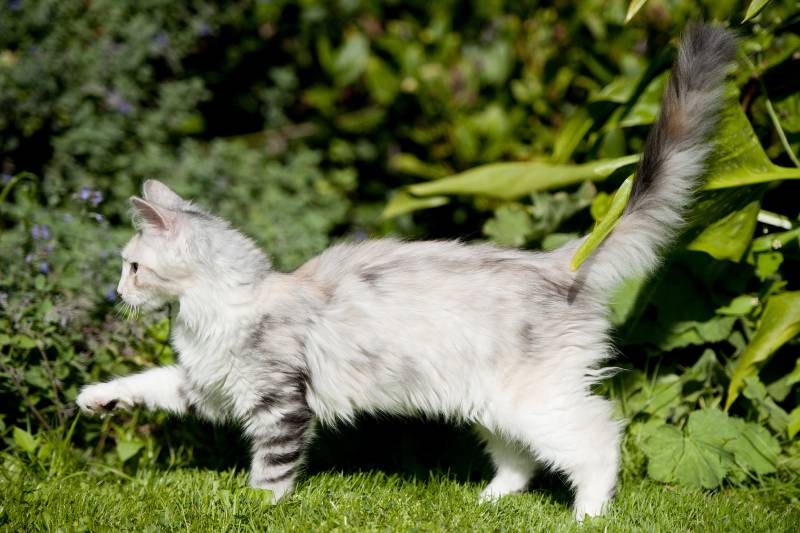
2. Question Mark
When the tail is held straight up in the hair but curved at the end like a question mark, the cat is happy and quite friendly. This is an invitation for petting or starting a play session.
3. Down and Low
When a cat is holding their tail straight down below the level of their back, they are feeling agitated or frightened. The lower the tail, the more afraid they are. Alternatively, they might be experiencing pain.
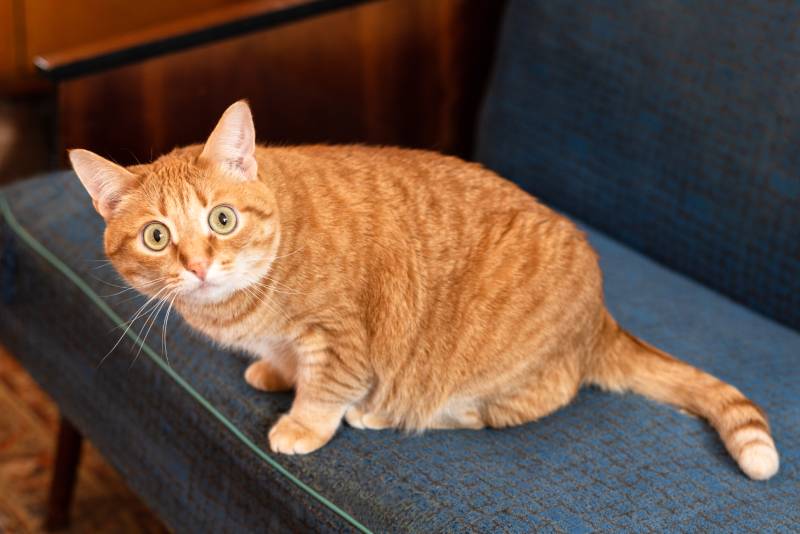
4. Puffed Up
If you’re at all familiar with cats, you know that a cat with a puffed-up tail is frightened and feels threatened.
Depending on how stressed they are, the cat will resemble a traditional Halloween cat with an arched back and puffy tail. This signals that you should keep back and give them space.
5. Whipping Back and Forth
The cat is typically angry or annoyed, depending on how much the tail is being thrashed around. Sometimes, the tail will thump on the floor. It’s best to leave this cat alone and give them their space.
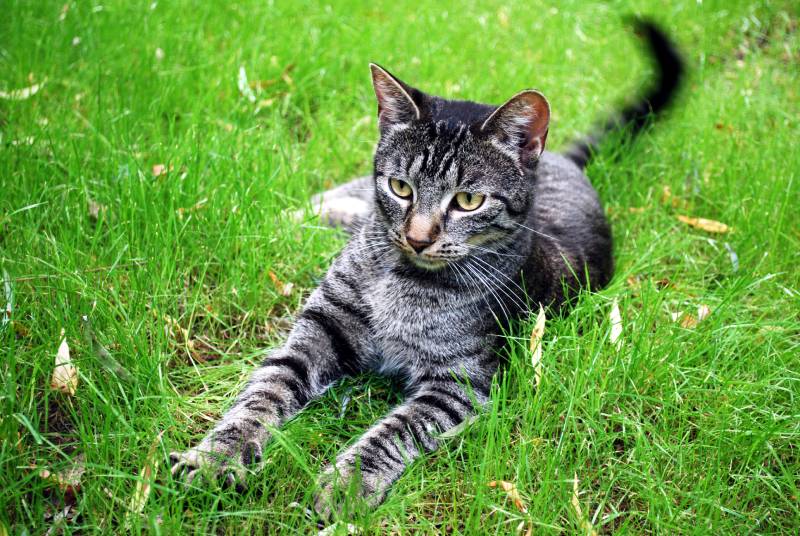
6. Swishing Tail
If the tail, particularly the tip, is gently swishing from side to side and is lowered, it usually indicates intense focus. This can be something that the cat is hunting, whether an actual mouse or a toy one.
They might also be feeling uncertain about something and are trying to judge whether they should investigate or hide.
7. Quivering
A quivering tail can mean the cat is quite happy and excited to see you. But if they quiver their tail while it’s held straight up and they are backed up against a surface, this is the position for urine marking.
Not all cats will spray, but they will go through the motions instinctively.
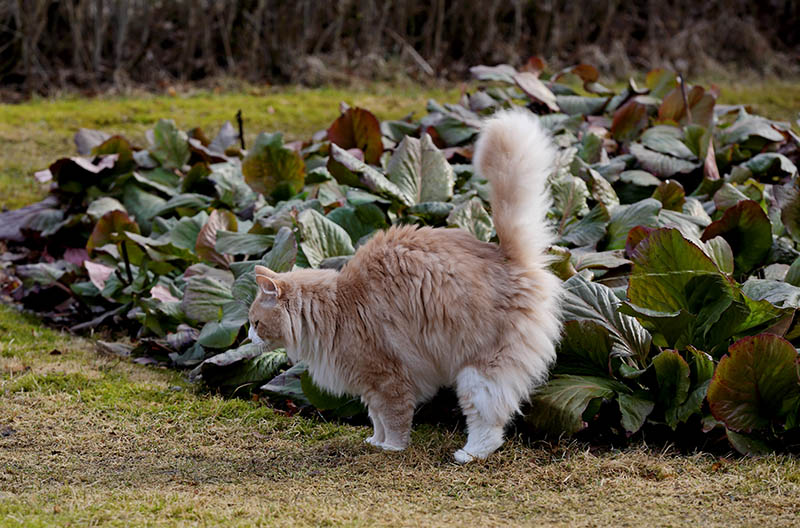
8. Curled Tightly Around Their Body
If your cat is lying down or sitting with their tail curled tightly around their body or feet, this may indicate that they are not feeling well, are in pain or frightened, or feel defensive.
If this type of position goes on for more than a day, you should see your vet to rule out illness or pain.
9. Wrapped Around Your Legs
Think of this as a hug from your cat. If two cats wrap around each other and entwine their tails, this is an affectionate, positive interaction.

It’s More Than the Tail
To get a much better read on how your cat is feeling, you must look at more than just what their tail is doing. Their eyes, ears, body, and even whiskers work together with the tail to send a message.
Happy and Relaxed
- Tail: This cat has a tail held straight up and with a curve at the end. It can also be quite still if they are lying or sitting down, perhaps loosely wrapped around their body.
- Ears: The ears are in a normal position without much movement.
- Eyes: They have normal pupil size, and the eyes might be closed part-way without looking terribly watchful or on alert.
- Body: While lying down, they might lie on their side with some of their belly showing. A cat that rolls onto their back around you is showing a great deal of trust.
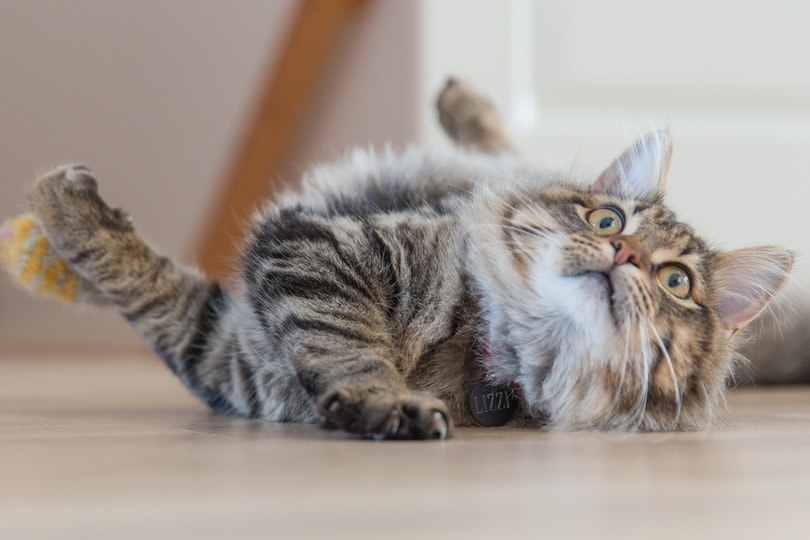
Playful
- Tail: The tail might be held lower with a twitching or swishing tip.
- Ears: The ears will point forward, and the cat will essentially look more alert.
- Eyes: The cat is focused on whatever they are playing with. The pupils will dilate as they watch with excitement and typically fully dilate just before the pounce!
- Body: There’s a great deal of crouching, sometimes with the rear end higher than the front. Cats tend to wiggle just before they pounce.
Scared or Aggressive
- Tail: The tail can be held up and rigid, curled tightly around the body, or puffed up in an arch.
- Ears: The ears are quite active, and you’ll notice more swiveling and rapid movements. They might also flatten their ears against their head or draw their ears down and point them sideways.
- Eyes: The pupils will be fully dilated and look alert.
- Body: The body might be arched and the fur puffed up, or they might be in a crouched position. They tend to go fairly still and use their eyes to keep an eye on the situation.
More Actions
Cats have even more ways to communicate than what we have listed here so far:
- Kneading: When your cat is relaxed and happy, they knead their paws on a surface like your lap or cat bed. This act is also fondly known as making biscuits. Kittens knead their mother while nursing, which helps the milk flow, so they associate feeling contentment as kittens with feeling contentment as adults.
- Rubbing: When cats rub against surfaces, including you, they are marking their territory. But when they rub against you, it is also a sign of affection.
- Vocalizing: You may have heard the wives tale that cats, particularly feral cats, don’t meow at one another. But they meow at us because they are looking for attention. They also purr when relaxed and happy, and yowling might mean they are angry or in pain. Hissing is a clear “back off” signal.
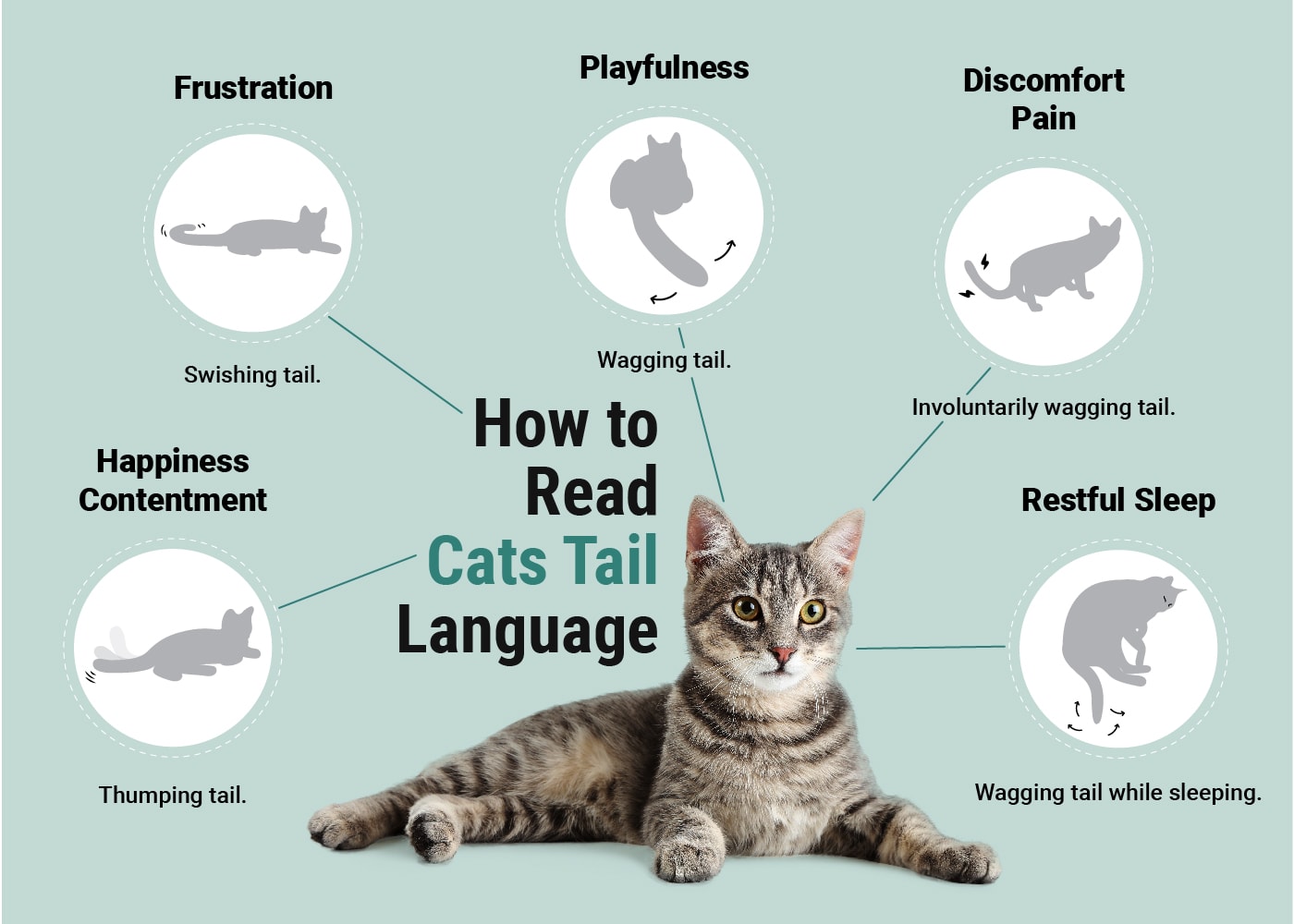

Conclusion
Cats are quite expressive animals. The nuances might be tricky at times to decipher, but when you take a cat’s tail into account, it tells us so much about how the cat is feeling.
That said, it’s also essential to consider the cat’s entire body language. We can easily misinterpret how a cat feels when we focus only on the tail.
So, use this article, and make a point of becoming familiar with your cat’s tail and body language. It will help you understand your cat better and improve your bond.
Featured Image Credit: Alexandra Giese, Shutterstock
Tags
What do you think?
Related Articles

New Puppy Checklist: Gear You’ll Need for Your New Dog
Getting a new puppy is really exciting, but before you welcome them home, it’s important to prepare your space for them. Since puppies need a

How Big Do Mini Poodles Get? Vet Reviewed Average Weight & Growth Chart – Dogster
The information is current and up-to-date in accordance with the latest veterinarian research. Learn more » When you buy a Miniature Poodle, you might not

Can Police Dogs Smell Nicotine? Vet Verified Facts & Info – Dogster
The information is current and up-to-date in accordance with the latest veterinarian research. Learn more » While cigarette sales have been declining steadily for decades,

How Old Is 5 in Dog Years? Vet-Approved Guide to Each Size of Dog – Dogster
The information is current and up-to-date in accordance with the latest veterinarian research. Learn more » A common method for calculating a dog’s age is

